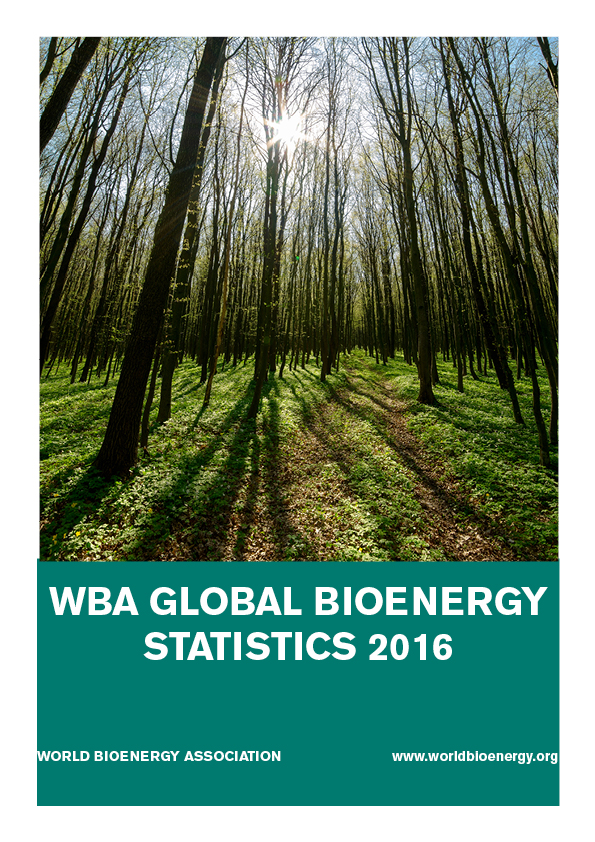Global Bioenergy Statistics 2016
 The World Bioenergy Association (WBA) is pleased to publish the 3rd Global Bioenergy Statistics report. The report shows that bioenergy is growing at a steady pace. In the year 2013, global biomass supply increased to 57.7 EJ accounting for 10% of the global energy supply. In terms of final energy consumption, the bioenergy use increased by 1.23 EJ – a modest increase of 0.05% over the past year. The share of bioenergy in final energy was 13.9%. The share of renewables was steady at 18.3% and the slow pace of growth is unsettling. Renewables contribution in electricity was 22%. The highest renewable share was in direct heat at 28% while in derived heat, only 7%. In the transportation sector, renewables contributed only 2.5% in 2013. Bioenergy is the third largest renewable electricity generating source. In other sectors of direct heat, derived heat and transport sector, bioenergy was the largest renewable energy source. Biomass supply is classified into agriculture, forestry and waste sector. Global agriculture area decreased by 0.53% since 2000. Increasing yields is crucial for both food and fuel production. Increasing global yields for maize, rice and wheat reduced land demand by 570 million ha. If average yields of these crops in Africa was the same as the global average, the demand for land could be reduced by half.
The World Bioenergy Association (WBA) is pleased to publish the 3rd Global Bioenergy Statistics report. The report shows that bioenergy is growing at a steady pace. In the year 2013, global biomass supply increased to 57.7 EJ accounting for 10% of the global energy supply. In terms of final energy consumption, the bioenergy use increased by 1.23 EJ – a modest increase of 0.05% over the past year. The share of bioenergy in final energy was 13.9%. The share of renewables was steady at 18.3% and the slow pace of growth is unsettling. Renewables contribution in electricity was 22%. The highest renewable share was in direct heat at 28% while in derived heat, only 7%. In the transportation sector, renewables contributed only 2.5% in 2013. Bioenergy is the third largest renewable electricity generating source. In other sectors of direct heat, derived heat and transport sector, bioenergy was the largest renewable energy source. Biomass supply is classified into agriculture, forestry and waste sector. Global agriculture area decreased by 0.53% since 2000. Increasing yields is crucial for both food and fuel production. Increasing global yields for maize, rice and wheat reduced land demand by 570 million ha. If average yields of these crops in Africa was the same as the global average, the demand for land could be reduced by half.
